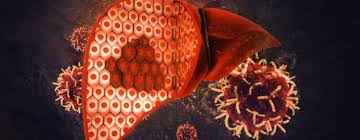A new global analysis warns that the number of new liver cancer cases is projected to nearly double from approximately 870,000 in 2022 to 1.52 million by 2050. Without urgent public health interventions, deaths could soar from around 760,000 to 1.37 million over the same period. This alarming rise is largely attributed to population growth, aging, and escalating levels of obesity and alcohol consumption.
Over Half of Liver Cancers Could Be Prevented
Fortunately, experts estimate that up to 60% of liver cancer cases stem from modifiable risk factors such as viral hepatitis (B and C), fatty liver disease, and excessive alcohol use. As liver cancer remains one of the most challenging cancers to treat with five-year survival rates ranging only from 5% to 30% prevention has become the most effective strategy to combat the disease.
Shifting Causes: Rising Risks from MASLD and Alcohol
- Metabolic dysfunction-associated steatotic liver disease (MASLD) formerly known as non-alcoholic fatty liver disease is emerging as the fastest-growing contributor to liver cancer globally. It now affects about one-third of the world’s population.
- A more severe form, metabolic dysfunction-associated steatohepatitis (MASH), is expected to account for 11% of liver cancer cases by 2050, up from 8% in 2022.
- Incidences linked to alcohol are rising as well, projected to increase from 19% to 21% of total cases by mid-century.
In contrast, cases related to hepatitis B and C are expected to decline slightly due to improved vaccination and treatment efforts, but they still account for a large portion of total liver cancer globally.
Public Health Strategies That Can Make a Difference
Researchers outline several impactful interventions:
- Expand hepatitis B vaccination and widespread screening.
- Implement targeted lifestyle programs promoting healthy diet and regular physical activity.
- Enact public policies such as alcohol unit pricing, sugar taxes, and clearer food labeling.
- Increase investments in early detection, surveillance for high-risk individuals, and palliative care infrastructure.
If effective, these measures could reduce liver cancer incidence by 2%–5% annually through 2050, potentially preventing 9 to 17 million new cases and saving 8 to 15 million lives.
Why This Matters
Compared to other cancers, liver cancer remains relatively rare but is particularly lethal due to its late diagnosis and the liver’s complex structure. As global obesity rates rise and metabolic diseases spread, the burden of liver cancer is shifting dramatically. However, with effective action, most of the projected increase can be avoided.
Key Takeaways at a Glance
| Indicator | 2022 | Projected 2050 |
|---|---|---|
| New cases | ~870,000 | ~1.52 million |
| Annual deaths | ~760,000 | ~1.37 million |
| % due to MASLD / MASH | 8% | ~11% |
| % due to alcohol | 19% | ~21% |
| % preventable (%) | ~60% | ~60% |
Final Thought
The projection that liver cancer cases may nearly double by 2050 is stark but not inevitable. With coordinated prevention strategies, lifestyle changes, and stronger healthcare policies, millions of cases and lives can be saved.



Comments (0)
No comments yet. Be the first to comment!
Leave a Comment